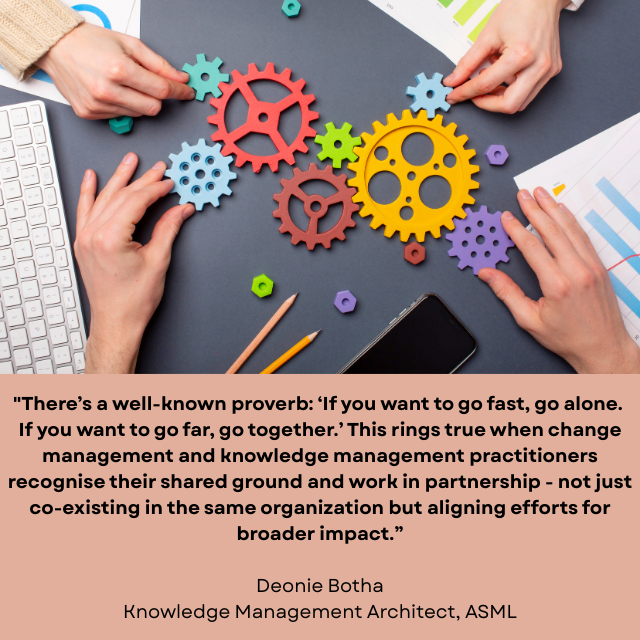- +1 (267) 368-7090
- contact@matcgroup.com
-
53 Knightsbridge Rd,
STE 216
Piscataway, NJ 08854.
This is the seventh post in a monthly series about change management.
Change is rarely easy. Whether it’s a new system rollout, a merger, or a shift in company strategy, employees often feel like they’re being asked to run a marathon without a map. That’s where knowledge management (KM) comes in—not as a dusty library of forgotten manuals, but as the compass that keeps teams aligned and confident during transition.
At its core, KM is about capturing, organizing, and sharing an organization’s collective expertise so that employees can find what they need, when they need it. It’s the bridge between individual know-how and organizational success.
In earlier articles, we’ve talked about KM as a way to preserve institutional knowledge, onboard new employees faster, and keep distributed teams aligned. When applied to change management, those same principles become even more critical. Without accessible knowledge, change feels like chaos. With it, change becomes a guided process.

Several KM principles directly intersect with organizational change:
These principles just directly reduce confusion, lower resistance, and keep projects moving forward.
Change can quickly reveal gaps in an organization’s knowledge landscape. Old processes no longer apply, new systems aren’t fully understood, and “tribal knowledge” becomes a liability when employees are expected to work differently.
This is where intentional knowledge capture comes into play:
In other words, KM ensures that no one is reinventing the wheel—or worse, guessing—when navigating change.
Imagine trying to adapt to a major change with ten different email threads, six conflicting versions of a document, and a “helpful” spreadsheet saved to someone’s desktop. Central repositories solve this problem by becoming the single source of truth.
A well-structured knowledge repository offers:
Pair this with collaboration tools, and you create an environment where employees both consume knowledge and contribute to it, strengthening adoption and ownership of change initiatives.
The real test of KM in change management comes after the transition. Once the dust settles, organizations must ensure that the hard-won knowledge doesn’t vanish into obscurity.
Key strategies for knowledge retention include:
Sustainable knowledge retention ensures that the investment made during change continues to pay off long after the project wraps up.
Change doesn’t have to mean confusion and lost productivity. With strong KM practices, organizations can make transitions smoother, empower employees with the resources they need, and ensure that valuable expertise doesn’t get left behind.
Related Blogs
Resilience in the Workplace: How Knowledge Management Can Help Organizations Adapt to Uncertainty
How Technical Writing Drives Change Management Success
Change Management: Why We Can’t Just Wing It
Palmer, Helen. “Effecting Better Knowledge Management and Change Management Collaboration.” Change Management Review. Accessed 8/29/25. https://changemanagementreview.com/km-cm-collaboration
Sachania, Ekta. “Why Change Management Needs Knowledge Management: A Strategic Partnership for Sustainable Transformation.” KMI. 4/7/25. Accessed 8/29/25. https://www.kminstitute.org/blog/why-change-management-needs-knowledge-management-a-strategic-partnership-for-sustainable-transformation